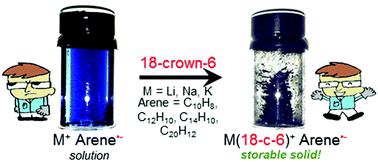25 Dec 14:29
by Punidha Sokkalingam, Joshua Shraberg, Steven W. Rick and Bruce C. Gibb

Journal of the American Chemical Society
DOI: 10.1021/jacs.5b10937

05 Dec 10:37
by Luca Catalano, Salvador Pérez-Estrada, Giancarlo Terraneo, Tullio Pilati, Giuseppe Resnati, Pierangelo Metrangolo and Miguel A. Garcia-Garibay

Journal of the American Chemical Society
DOI: 10.1021/jacs.5b10776

04 Dec 06:38
by Christopher S. Wood, Colm Browne, Daniel M. Wood and Jonathan R. Nitschke

ACS Central Science
DOI: 10.1021/acscentsci.5b00279
20 Nov 19:16
by Yurii S. Moroz, Tiffany T. Dunston, Olga V. Makhlynets, Olesia V. Moroz, Yibing Wu, Jennifer H. Yoon, Alissa B. Olsen, Jaclyn M. McLaughlin, Korrie L. Mack, Pallavi M. Gosavi, Nico A. J. van Nuland and Ivan V. Korendovych

Journal of the American Chemical Society
DOI: 10.1021/jacs.5b07812

19 Nov 20:15
by Zheng Niu, Sheng Fang, Xiao Liu, Jian-Gong Ma, Shengqian Ma and Peng Cheng

Journal of the American Chemical Society
DOI: 10.1021/jacs.5b10815

16 Nov 19:39
by Wei Luo and Liangbing Hu

ACS Central Science
DOI: 10.1021/acscentsci.5b00357
13 Nov 07:30
by Matthew Nava, Nazario Lopez, Peter Müller, Gang Wu, Daniel G. Nocera and Christopher C. Cummins

Journal of the American Chemical Society
DOI: 10.1021/jacs.5b08495

11 Nov 06:13
by Tanya K. Ronson, Derrick A. Roberts, Samuel P. Black and Jonathan R. Nitschke

Journal of the American Chemical Society
DOI: 10.1021/jacs.5b09920

09 Nov 11:17
by Dominik Lorbach, Ashok Keerthi, Teresa Marina Figueira-Duarte, Martin Baumgarten, Manfred Wagner, Klaus Müllen

A double cone: A synthetic route is developed to give a double-cone shaped six-membered pyrene macrocycle, thus extending the aromatic system of the cyclohexa-m-phenylene.
[Communication]
Dominik Lorbach, Ashok Keerthi, Teresa Marina Figueira-Duarte, Martin Baumgarten, Manfred Wagner, Klaus Müllen
Angew. Chem. Int. Ed., November 06, 2015, DOI: 10.1002/anie.201508180. Read article
02 Nov 14:06
by Mickaël Ménand, Matthieu Sollogoub, Bernard Boitrel, Stéphane Le Gac

In a state of flux: When an α-cyclodextrin was capped covalently with a hexaphyrin(1.1.1.1.1.1) derivative (see structure), the 26 and 28 π-electron oxidation states of the planar hexaphyrin unit were interconvertible, thus affording a rare switchable aromatic–antiaromatic system. The hexaphyrin cap with a rectangular conformation appeared to rotate above the cyclodextrin through a short-side-to-long-side shape-shifting mechanism.
[Communication]
Mickaël Ménand, Matthieu Sollogoub, Bernard Boitrel, Stéphane Le Gac
Angew. Chem. Int. Ed., October 30, 2015, DOI: 10.1002/anie.201508009. Read article.







![[BOND]](http://onlinelibrarystatic.wiley.com/undisplayable_characters/00f8ff.gif) C Bond Formation" src="http://onlinelibrary.wiley.com/store/10.1002/anie.201509608/asset/image_n/ncontent.jpg?v=1&s=b82a7f91561fbe297923d54d47b1a7048dc16561" />
C Bond Formation" src="http://onlinelibrary.wiley.com/store/10.1002/anie.201509608/asset/image_n/ncontent.jpg?v=1&s=b82a7f91561fbe297923d54d47b1a7048dc16561" />






 Open Access
Open Access







